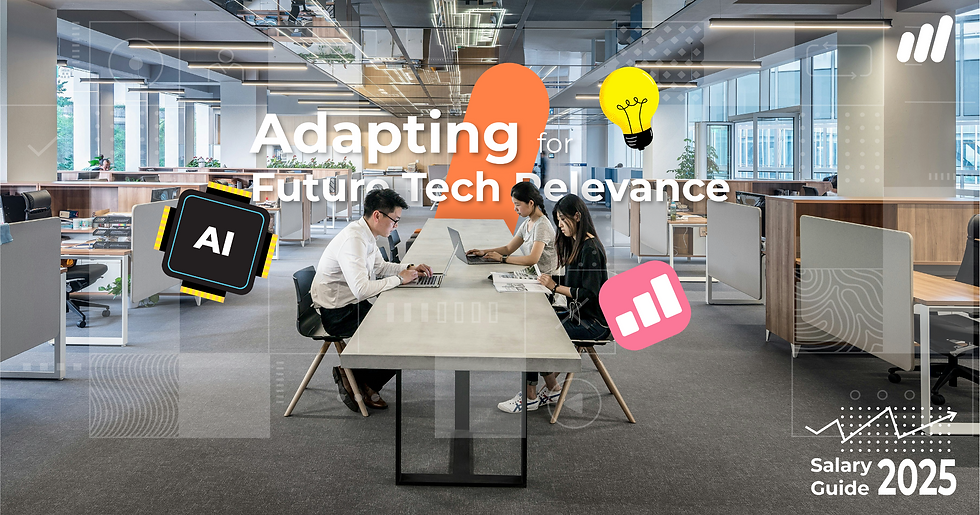Automation in the IT sector is becoming a disruptive force in the quickly changing technological landscape, changing how companies function and altering the responsibilities of IT specialists. Fundamentally, automation is the use of technology to carry out jobs with little assistance from humans. Although automation has been used in IT for many years, its recent rapid acceptance and use are drastically changing the field, opening up new career paths for senior professionals while also decreasing the need for some conventional positions. In Vietnam, where technology is advancing at a rapid pace, businesses are using automation in the IT sector to boost output, draw top personnel to cutting-edge industries, and compete globally.
1. The Evolution of Automation in IT Industry
IT has traditionally included a broad range of duties, from simple system and network maintenance to intricate program creation. For these activities to be carried out successfully, human participation has been essential. However, the definition and execution of these tasks have undergone a significant transformation with the introduction of advanced automated technologies and solutions. Software testing, system monitoring, and data input were among the repetitive, rule-based operations that were the main focus of the first IT automation attempts. Despite their importance, these chores were frequently viewed as tedious and time-consuming, which fueled the need for increased productivity and efficiency.

Many typical IT tasks may now be carried out with little to no human oversight because of ground-breaking technologies like robotic process automation (RPA), machine learning (ML), and artificial intelligence (AI). These technologies have a variety of effects. On the one hand, IT workers may concentrate on higher-value duties like strategy planning, system architecture design, cybersecurity management, and improved customer interaction by automating monotonous processes. However, automation in the IT sector may result in a decline in the need for conventional IT positions that include repetitive duties, calling for a reassessment of the skill sets needed in the contemporary labor market. IT workers must adjust to this change and pick up new abilities in order to stay competitive and relevant.
2. Impact on IT Roles: Opportunities and Challenges
2.1. Opportunities for Senior Specialists
Senior IT professionals and experts face exciting new prospects as a result of the growing automation in the IT industry, even while those whose careers are at risk may find it alarming. There is a rising need for qualified individuals who can develop, deploy, and manage these increasingly sophisticated automated systems as the IT landscape changes dramatically. Senior experts are in a unique position to spearhead the automation shift by utilizing their in-depth knowledge of IT procedures, sophisticated problem-solving skills, and strategic thinking.
For instance, professionals skilled in AI and data analytics are in high demand as companies seek to analyze vast amounts of data generated by automated systems. Moreover, the need for cybersecurity has exponentially increased; as organizations automate their systems, securing them from cyber threats becomes critical. Senior IT roles increasingly focus on building robust security frameworks that can integrate with automated systems while protecting sensitive data.
Furthermore, automation presents opportunities in areas such as project management and strategic oversight. Senior professionals who can assess the implications of automation on business operations, provide guidance on integrating automated solutions, and ensure that these technologies align with organizational goals are invaluable. In a nutshell, automation is not simply reducing job opportunities; it is transforming the nature of IT roles and creating more engaging and strategically significant positions for seasoned professionals.
2.2. Challenges for Traditional IT Roles
Although automation opens up new possibilities, it also presents serious difficulties for workers in conventional IT positions that mostly involve repetitive duties. The need for human labor in various fields declines when these operations are automated, which might result in job displacement. This calls for a proactive strategy to upskill and reskill the current workforce. To be competitive in the employment market, IT workers need to be open to learning new skills in fields like cloud computing, cybersecurity, data analytics, and AI/ML.
Additionally, training companies and educational institutions are essential in preparing the workforce of the future for the automated IT environment. The most recent technology and competencies needed for jobs involving automation must be incorporated into curricula. Giving students practical experience in creating, putting into practice, and overseeing automated systems is part of this. Academics must work together to guarantee that the talent pool has the abilities required to spur innovation and sustain the ongoing expansion of automation in IT industry.
3. The Current Landscape in Vietnam and Talent Acquisition
3.1. Automation in IT Industry in Vietnam
With more and more domestic and foreign businesses making significant investments in technology, Vietnam is undergoing a fast digital transition. The Vietnamese government has put regulations in place to improve the nation's technology infrastructure and foster innovation because it recognizes the significance of automation in the IT sector. Automation has become a key factor driving the country's economic expansion and integration into the global economy in this dynamic environment.
In order to increase productivity, reduce operating expenses, and successfully compete globally, Vietnamese businesses are rapidly implementing automation tactics. These businesses can increase overall efficiency, optimize resource allocation, and streamline processes by integrating automated systems. For instance, organizations in the manufacturing industry are utilizing automation to improve assembly lines, eliminate human error, and boost both product quality and productivity. Significant gains in competitiveness and productivity are being fueled by this.
3.2. Attracting and Retaining Talent in Advanced Fields
Organizations must place a high priority on luring and keeping personnel with sophisticated skills if they want to thrive in the IT industry's age of automation. Businesses are increasingly viewing capabilities in fields like artificial intelligence (AI), data analytics, cloud computing, and cybersecurity as crucial differentiators in the marketplace. In addition to technical proficiency, employers are seeking a mentality that emphasizes creativity, flexibility, and lifelong learning.
Vietnamese companies are using a variety of tactics to draw in and interact with prospective employees. These include holding hackathons and group workshops to find people who have the technical know-how creativity and problem-solving skills needed to succeed in a technology-driven environment. Attracting and keeping elite individuals who can develop automation projects also requires competitive pay, extensive benefits packages, and obvious career growth chances.

Moreover, as companies strive to position themselves as leaders in technological innovation, they are cultivating a workplace culture that values continuous learning. Offering training programs, mentorship, and supporting professional development can create an environment where employees feel empowered to expand their skills in alignment with automation efforts.
Conclusion
Automation in IT industry is undeniably reshaping the IT landscape, exerting both positive and disruptive effects on traditional roles. As routine tasks become more automated, the demand for skilled professionals who can orchestrate, integrate, and oversee these systems is surging. In Vietnam, where the tech industry is gaining momentum, the strategic implementation of automation stands as a beacon for companies to enhance productivity and attract talent. This transformative phase presents a unique opportunity for both organizations and specialists to redefine the future of work in IT, steering toward a more innovative and strategic approach in an increasingly automated world. The key lies in embracing change, pursuing continuous education, and cultivating a workforce that is prepared to adapt to the rapid advancements of technology.
Are you ready to navigate the dynamic IT landscape in Vietnam? The Vietnam IT Salary Guide 2025 is your ultimate resource for understanding salary trends, emerging roles, and skills in the highest demand. Packed with insights into Vietnam’s evolving position as a regional tech hub, this report empowers businesses and professionals to make informed decisions in a competitive market.
Don’t miss the chance to gain a strategic edge in recruitment, workforce planning, and salary benchmarking. Download the full report now!



コメント